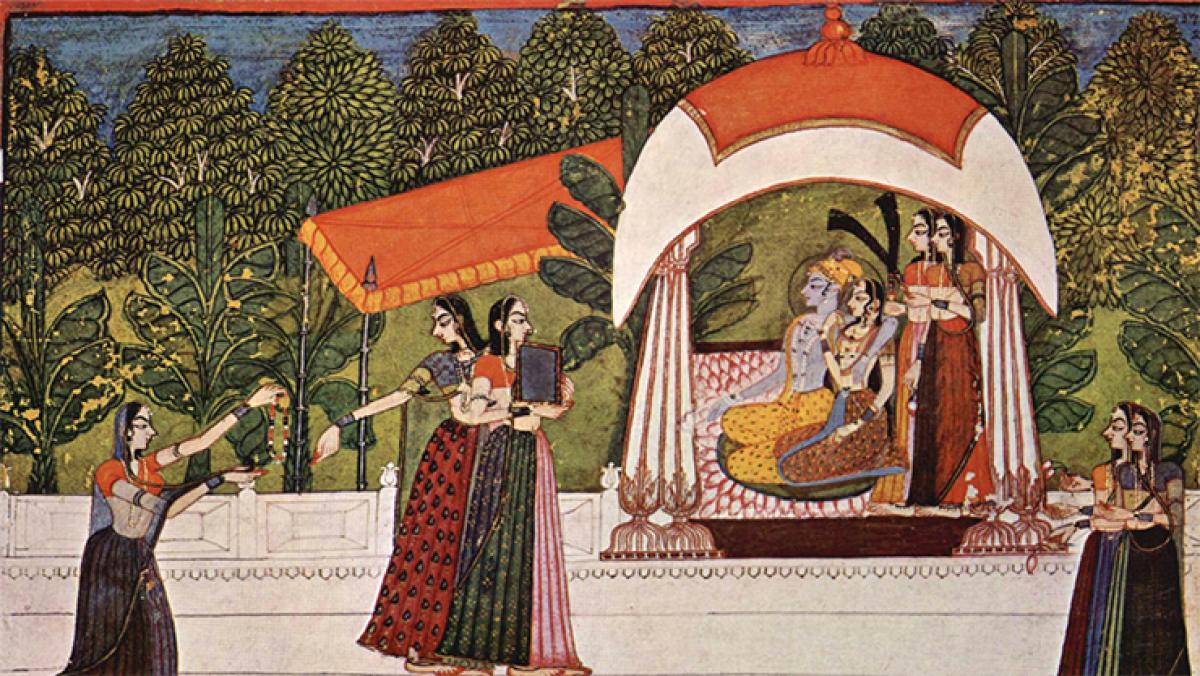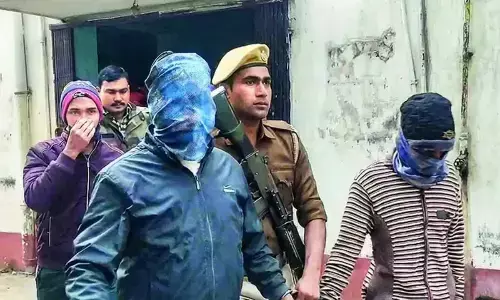Art in medieval India

During the period of Delhi Sultanate, mural painting has been reported from the royal palaces and royal bed-chambers and mosques. These chiefly depict flowers, leaves and plants. During the time of Iltutmish (1210-36) we have references of paintings.
During the period of Delhi Sultanate, mural painting has been reported from the royal palaces and royal bed-chambers and mosques. These chiefly depict flowers, leaves and plants. During the time of Iltutmish (1210-36) we have references of paintings.

During the time of Alauddin Khalji (1296-1316) we have mural painting, miniature painting (of illustrated manuscripts) and paintings on cloths. During the Sultanate period, we notice the Persian and Arabic influences on Indian painting. We have references of the coming of Persian and Arabic illustrated manuscripts from Iran and the Arab world for the Muslim elites.
During this period, we have paintings from other regional states. The decorative paintings of the palace of the Gwalior king Man Singh Tomar impressed both Babur and Akbar. During 14th – 15th centuries A.D. miniature painting emerged as a powerful movement in Gujarat and Rajasthan and spread to Central, North and Eastern India because of the patronage of rich Jain merchants.
Mandu in M.P., Jaunpur in Eastern Uttar Pradesh and Bengal in Eastern India were other great centres of manuscripts illustrated with paintings. In Eastern India, in Bengal, Bihar and Orissa, during the Pala kingdom in the 9th – 10th century A.D., a new kind of painting developed called the miniature painting.
The miniature, as the name suggests, were small works which were made on perishable materials. In this category, Buddhist, Jain and Hindu manuscripts were illustrated, on palm leaves. They resemble the Ajanta style, but on a miniature scale. These were made on the request of the merchants, who donated them to the temples and monasteries.
From the thirteenth century onwards, the Turkish Sultans of northern India brought with them important features of Persian court culture. In the fifteenth and sixteenth centuries illustrated manuscripts of Persian influence were produced at Malwa, Bengal, Delhi, Jaunpur, Gujarat and the Deccan. The interaction of Indian painters with Persian traditions resulted in the synthesis of the two styles evident in the works of the sixteenth century.
During the early sultanate period, significant contribution to the art of painting was made by the Jain community of Western India. llustrated manuscripts of Jain scriptures were presented to temple libraries. These manuscripts depicted the lives and deeds of the Tirthankars. The art of textual illustration got a new look under the Mughals. Akbar and his successors brought revolutionary changes to painting and sensual illustrations.
From this period book illumination or individual miniatures replaced wall painting as the most vital form of art. Emperor Akbar patronised artists from Kashmir and Gujarat; Humayun brought two Persian painters to his court. For the first time painters’ names were recorded in inscriptions. Some great painters of this period were Abd-us-Samad Dasawanth and Basawan.
Beautiful illustrations are found on the pages of Baburnama and Akbarnama. Within a few years an integrated and dynamic style resulted from the synthesis of Persian and Indian style and the independent style of Mughal painting was developed. Between 1562 and 1577 a series of nearly 1400 cloth paintings were produced representing the new style and were placed in the imperial studio. Akbar also encouraged the art of making portraits.
The art of painting reached its climax during the period of Jahangir who himself was a great painter and connoisseur of art. Artists began to use vibrant colours such as peacock blue and red and were able to give three dimensional effects to paintings. Mansur, Bishan Das and Manohar were the most gifted painters of Jahangir’s time. Mansur had made an outstanding portrait of the artist Abul Hasan and specialised in paintings of birds and animals.
Though Shah Jahan was more interested in architectural splendours, his eldest son Dara Shikoh patronised painting like his gradfather. He preferred depicting natural elements like plants and animals in his painting. However withdrawal of royal patronage to painting under Aurangzeb led to the dispersal of artists to different places in the country. This helped in the development of the art of painting in Rajasthan and the Punjab hills giving rise to distinct schools of paintings, for example, Rajasthani and Pahari Schools.
These works were painted on a small surface and were called miniature painting. They painted themes drawn from epics, myths and legends. Other themes were Barahmasa (seasons) and Raga mala (melodies). Miniature painting was also developed at local centres like Kangra, Kulu, Basoli, Guler, Chamba, Garhwal, Bilaspur, and Jammu.
The rise of the Bhakti movement in India in the fifteenth and sixteenth centuries also inspired illustrative texts on the themes of Vaishnava devotional cults. In the pre-Mughal era mural paintings on the walls of temples gained prominence in the northern part of India.















